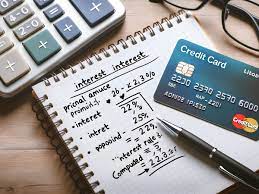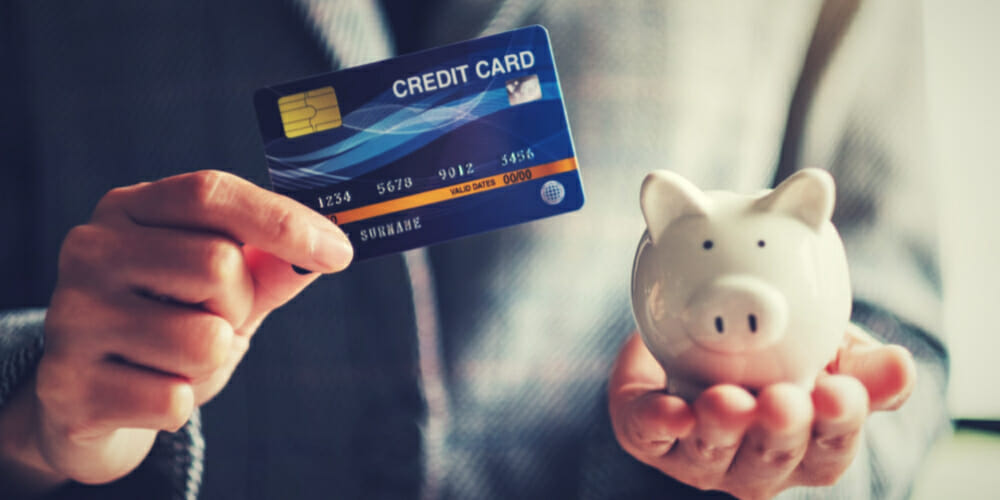What is Credit Card Interest?
Credit card interest is essentially the cost of borrowing money from a credit card issuer. It is expressed as an annual percentage rate (APR), which reflects the interest charged on any outstanding balance not paid in full by the due date. This means every time a cardholder carries a balance, they are incurring interest, making it crucial to understand how it impacts their finances.
For instance, if you have an APR of 20% on a $1,000 balance, you could pay $200 in interest over a year if you don’t pay off the debt. This shows how easily debt can accumulate.
How is Credit Card Interest Calculated?
The calculation of credit card interest is done using the APR and determining the daily interest rate. Here’s a simple breakdown:
- Annual Interest Rate (APR): This rate can be variable or fixed, depending on the card terms.
- Daily Interest Rate Calculation: The APR is divided by 365 (days in a year). For example, an APR of 20% translates to a daily interest rate of approximately 0.055%.
- Example Calculation:If you have a $1,000 balance, the interest for one day would be:
[ \text{Daily Interest} = \text{Balance} \times \text{Daily Interest Rate} ] [ = 1,000 \times 0.00055 = \$0.55 ]
This daily interest is accumulated each day the balance remains unpaid, effectively adding to the total debt over time.

Types of Credit Card Interest
Purchase APR
The Purchase APR is the interest rate applied to everyday purchases made with a credit card. When a cardholder buys something and carries a balance from one month to the next without paying it off in full, this rate comes into play. For example, if a credit card has a Purchase APR of 18% and the balance is $1,000, failing to pay that balance could incur substantial interest charges over time.
Cash Advance APR
The Cash Advance APR applies when cardholders withdraw cash using their credit cards. This rate is typically higher than the Purchase APR. For instance, many cards charge around 24% or more for cash advances. Not to mention, cash advances often come with fees, making them an expensive option. Hence, it’s advisable to avoid using a credit card for cash withdrawals unless absolutely necessary.
Balance Transfer APR
The Balance Transfer APR refers to the interest rate applied to any amounts transferred from other credit cards to a new one, often used to consolidate debt. Many cards offer promotional rates, sometimes as low as 0% for a limited period. However, it’s crucial to understand the regular APR that kicks in afterward. For instance, if a card has a promotional Balance Transfer APR of 0% for the first 12 months but reverts to 20% after that, careful planning is essential to avoid high costs later on. Understanding these varying interest types equips cardholders to make informed financial decisions.
Factors Influencing Credit Card Interest Rates
Credit Score
One of the most significant factors affecting credit card interest rates is the cardholder’s credit score. This three-digit number reflects a person’s creditworthiness, impacting the likelihood of approval for a card and the terms offered. For instance, individuals with excellent credit scores (typically over 750) often qualify for lower APRs, while those with poor credit may face higher rates. It’s essential for potential borrowers to actively monitor their credit scores and take steps to maintain or improve them, as this can lead to substantial savings in interest costs over time.
Economic Conditions
Economic conditions can also play a crucial role in determining interest rates. When the economy is thriving, credit card issuers may lower their rates to attract more customers. Conversely, during economic downturns, interest rates may hike as lenders become cautious about lending. For example, if inflation rises or the Federal Reserve increases interest rates to combat economic changes, credit card APRs are likely to increase as well. Understanding these broader economic shifts can help cardholders anticipate changes in their rates.
Cardholder’s Payment History
Finally, a cardholder’s payment history directly influences their interest rate. Consistent on-time payments demonstrate reliability, which may encourage issuers to offer lower rates. However, missed payments or late fees can lead to increased APRs, including potentially a penalty APR, which is significantly higher. Maintaining a positive payment history not only ensures lower interest costs but also helps improve credit scores, creating a positive feedback loop in favor of financial health.
Risks of High Credit Card Interest
Increased Debt
One of the primary risks associated with high credit card interest rates is the potential for increased debt. When cardholders carry a balance from one month to the next, they incur interest charges that compound quickly. For example, if someone has a $2,000 balance with an APR of 20%, just one month of unpaid interest can add over $33 to their debt. This insidious cycle can lead to escalating balances that become challenging to manage.
- Compounding Interest: The longer the balance remains unpaid, the more interest accumulates.
- Long-Term Debt: Continuous reliance on credit for daily expenses can spiral out of control, leading to a cycle of debt.
Negative Impact on Credit Score
High credit card interest can also negatively impact a person’s credit score. The credit utilization ratio, which reflects the percentage of available credit being used, is a crucial factor in credit scoring.
- Rising Balances: If balances consistently remain high due to accumulating interest, it can lead to a poor credit score.
- Payment History: Missing payments or only making minimum payments can further damage credit scores, making it harder to secure better interest rates in the future.
As a result, managing credit card balances wisely is essential to avoid detrimental effects on both debt levels and credit health.

How to Avoid Credit Card Interest
Paying the Full Balance Monthly
The most effective way to sidestep credit card interest is by paying your full balance every month. When you do this, you leverage your card issuer’s grace period, preventing any interest from accumulating on your purchases. Imagine your monthly expenses of $800; if you pay this off promptly, you won’t owe a dime in interest. However, be cautious—if you only make the minimum payment, interest will quickly mount, turning small purchases into significant debt.
Transferring Balances to a Low-Interest Card
Another useful strategy is transferring high-interest credit card balances to a card with a lower APR. Many credit issuers offer promotional rates, even 0% for an introductory period. For instance, if you’re juggling $5,000 in credit card debt at 24%, moving it to a card with a 0% APR for 12 months could save you substantially. Just ensure you understand the terms and don’t miss the deadline to avoid higher rates thereafter.
Negotiating with Credit Card Companies
Lastly, don’t shy away from negotiating with your credit card company. If you’ve been a loyal customer with a solid payment history, many issuers are willing to lower your interest rates. Just a simple phone call can sometimes lead to a more favorable APR, which translates directly to lower interest payments in the future. Even if you’re initially unsuccessful, it demonstrates you’re proactive about managing your finances, which can benefit you later on.